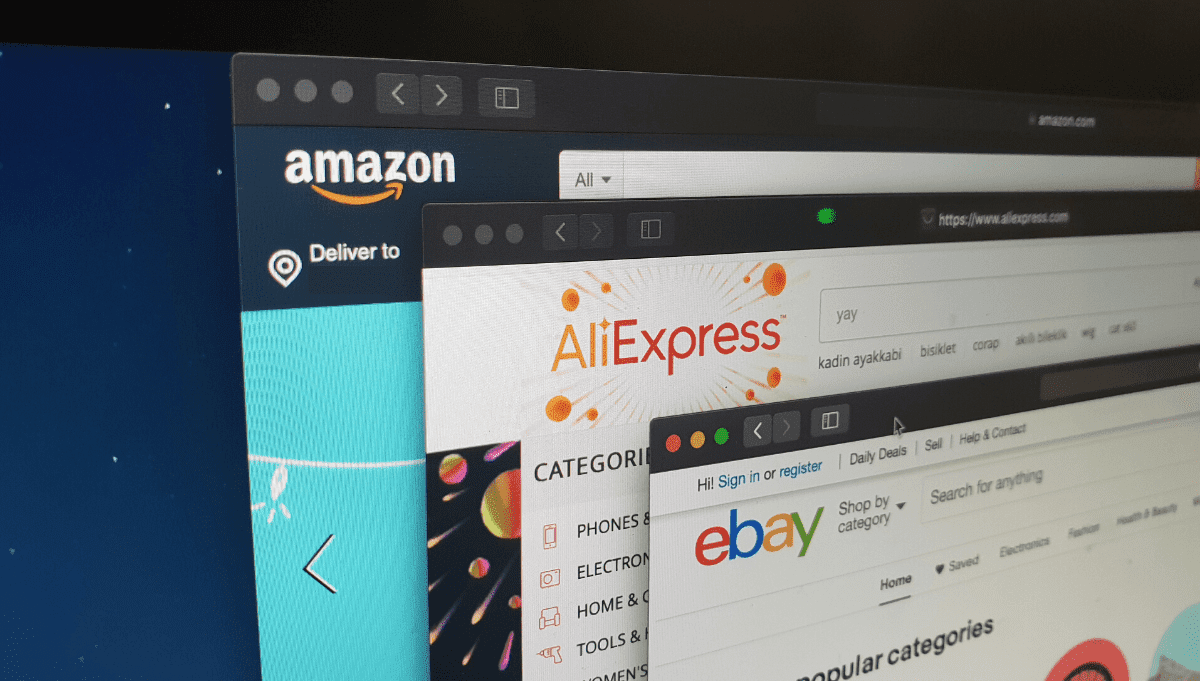
>Share this post<

by Lauren Cassidy
December 09, 2021
The Top 100 online marketplaces in the world collectively grew their GMV by 29% in 2020 compared to the previous year. While it’s crucial for retailers to have their own eCommerce presence, enabling them to completely control the branding and user experience, there are a number of benefits to be discovered through marketplace selling, especially in today’s post-COVID landscape. Pureplay marketplaces, such as Amazon and eBay are like digital department stores – they carry a certain amount of trust and familiarity for consumers and expand your reach which, in turn, increases your revenue. This technically minimises the amount of legwork needed to gain visibility in a crowded space (That said, we all know it’s not that easy and will require a marketing strategy).
While each retailers situation will dictate whether or not marketplace selling is the right move, we’re discussing the benefits such a move can have for retailers in the run-up to 2022.
Search habits have changed.
If customers simply google my product, they’ll be led straight to it or at the very least my eCommerce store, right? Well, while SEO plays a massive role in how people discover your website, it appears that consumers have evolved from the “just google it” thought process.Marketplaces such as Amazon and eBay are now the starting point for 44% of product searches – compared to 19% of searches that start on a search engine. The consumer is now savvier than ever when it comes to researching their desired products – and while search engines offer functional results, they tend to be more generalised. Marketplaces shorten the research path and allow for a more refined search pertaining to features such as price, quantity, colour, ratings and reviews.
According to Signifyd, the conversion rate for customers from searchers to buyers is 74% on Amazon Prime – while the Top 500 eCommerce websites convert shoppers to buyers at 3.3%. If the marketplace has the product the consumer is looking for – at the right price and can answer all their questions and concerns without leaving the page – what additional value does a search engine have to offer?Increase the reach of your product
Selling on marketplaces provides an immense amount of traffic that your product might miss by sitting solely on your eCommerce site. Amazon, in particular, boasts about 2.7 billion visits on a daily basis worldwide – a very much established audience base all before you’ve done anything yourself to increase brand awareness. As mentioned above, customers use it twice as often when searching and researching products in comparison to Google, putting your product precisely where it needs to be to gain traction.Analysing your audiences also becomes a simpler task – you might find that the users who frequent particular marketplaces are more likely to buy your products and therefore, you can focus on catering to this market. Marketplaces provide an opportunity for you to reach buyers that might not typically cross your path – opening your business up to new demographic niches and sales opportunities.
Indirect reputation
This can be majorly beneficial particularly if your product or business is relatively new to the market. Amazon and eBay users have already built up trust in the customer journey. You stand to reap the benefits of this secondary loyalty as if customers are happy with what they’ve purchased, they’ll likely return to the marketplace to buy it again. This makes UX one less thing for you to worry about.The ease of re-ordering is pre-meditated as consumers with Amazon and eBay accounts can easily track and repeat previous orders, further encouraging customer loyalty.
Another option for consumers
Consumers seek out brands that are flexible to their needs with omnichannel shoppers spending approximately 10% more when shopping online, compared to single-channel shoppers.We have primarily focused on eBay and Amazon so far, however social selling is becoming increasingly popular. Facebook Marketplace has about 1 billion users around the world and 43% of internet users turn to social networks to carry out research on brands or products – but selling them within the same space removes the need to promote your products. Selling on social media can facilitate a type of “digital windowshopping” which can be great for “impulse buyers”. The less friction between discovery and purchases, the higher the likelihood of immediate conversion.
Why merchants choose Kooomo to sell on Marketplaces
Kooomo uses third party marketplace connectors to ensure retailers are not only reaching the right audiences but also their full reachability with our Marketplace Business Units.
For example, using Lengow, we’ve kick-started marketplace activities and SEO Amazon services for our client Smemoranda with the aim of improving GMV and the visibility of the brand. Using Lengow for feed management, Smemoranda can now import their orders easily from Amazon - expanding their sales channels just in time for busy season.
Available for all of our merchants, This solution quickly formats your product feed, without needing technical knowledge and can easily adapt to the requirements of various marketplaces (Amazon, Cdiscount, Wish, eBay etc).
Conclusion
Businesses and consumers alike seek out convenience, and marketplace selling can deliver in regards to both. With giants like Amazon, eBay and Facebook already built into so many consumers buying processes, many steps of the brand awareness process are eliminated. This can free up retailers time to focus on other aspects of their business.
We have simplified and synchronised selling on Marketplaces by having a centralised order management system integrated with all marketplaces and eCommerce. Via one single platform, merchants can easily manage multiple orders, messages, and related documentation into a consolidated single view. The first benefit of going online with Kooomo is that you’re in total control over your business at every stage – be it your eCommerce site or preferred marketplace. You can harness the power of all channels of distribution, control them with ease and maximise your revenue potential. Learn more about Marketplaces with Kooomo here.
The benefits of selling on Marketplaces may seem like a no brainer especially for newer businesses with minimum presence – however, it’s important to consider the exclusiveness of your brand, and the importance of full ownership over your CX and UX. Selling on your own eCommerce site is the only way to have full control over your brand and how consumers interact with it.
We discussed this matter in a recent blog, with reference to Nike’s decision to part with Amazon in order to control their own customer data. You can read the full article here – as with both sides of the argument to and against marketplaces being of substantial weight, it comes down to what your individual business needs to determine if marketplaces are right for you.
More to explore
In the next few years, we are foreseeing an impressive increase for the global retail industry. While this can be beneficial for the global eCommerce industry, it also means that there will be more competition, as well.
European Data Protection rules were launched back in 2018, to protect the confidentiality of our personal data but even four years later, there is still a lack of understanding among companies and consumers about how to comply with the best practices. Big tech companies, like Google or Amazon, usually refer to the acronym GDPR, to explain the rules that verify the data, so it is not used inappropriately, but to add details to create confusion.



